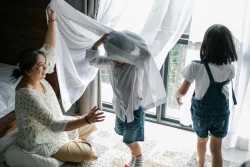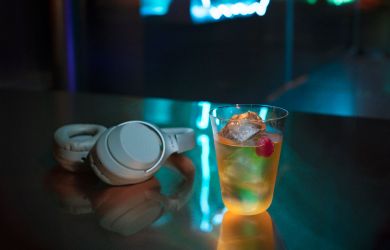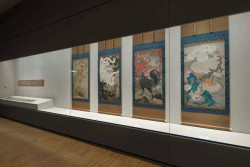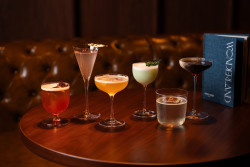
September 13, 2013
Island Style
A passion for Hawaii is bringing the spirit of aloha to Japan
By Metropolis
Originally published on metropolis.co.jp on September 2013

When Misao Yoshino was planning her honeymoon, Honolulu wasn’t just at the top of her list, it was the list. The news producer for a major Tokyo broadcaster would be joined on the trip by close relatives, so she figured that Hawaii—easily reachable by plane and supremely Japanese-friendly—would offer both a romantic getaway and a fun time for her family. And the group would certainly be in good company: According to Hawaii tourism officials, more than 20 percent of the 1.5 million Japanese who visited the islands last year came for honeymoons or wedding ceremonies.
Getting Lei’d in Tokyo
Sing, dance, eat, shop—a guide to local Hawaiian treats
Festivals
Aloha Yokohama
The year’s top event for Hawaii enthusiasts features music and dance performances, food, fashion and art, plus stalls run by island-based businesses. 2014 dates TBD. www.aloha-yokohama.com
Odaiba Hawaii Festival
This smaller-scale festival has food trucks, stage performances and crafts workshops. 2014 dates TBD. www.venusfort.co.jp/hawaii/index.html
Dance
Koulima Nani ‘E Tokyo
Based in Sendagaya, Koulima Nani ‘E Tokyo is an official partner of the Hilo-based dance school run by legendary hula teacher ’Iwalani Kalima who arrives in town to conduct a workshop Oct 26-27. www.limahula.jp
Massage
Queensway
This leading chain of relaxation salons offers Hawaiian lomi lomi massage—said to promote well-being by redirecting energy flow—for ¥6,300 for 45 minutes. www.queensway-salon.jp
Jewelry
Maxi
Island-inspired rings, pendants, necklaces, bracelets, earrings and more from this Waikiki-based retailer with locations at Printemps Ginza, 109 Men’s Shibuya and Sogo Yokohama, among others.
www.maxihawaii.com
http://shop.maxi-j.com
Philip Rickard
Hawaii’s premier jeweler maintains a service office in Tokyo.
www.philiprickard.com/jp
Wailea
Wailea offers made-to-order jewelry crafted in Hawaii, with shops in Yokohama’s Motomachi shopping street, Odaiba and Shinjuku Takashimaya.
http://wailea.co.jp
Music
Ogo’s Autumn Kanikapila 2013
This twice-yearly concert, organized by Akasaka restaurant Ogo Ono-loa Hawaii, introduces leading island musicians to Japanese audiences. Sep 29, Harumi Passenger Boat Terminal Hall.
www.ogohawaii.net/en
Konishiki
The Hawaii-born former sumo champion gives regular performances of traditional island music. Next up: Sept 16, Kanagawa Kenmin Hall. www.konishiki.net
Jake Shimabukuro
A Hawaiian of Japanese descent, ukulele star Shimabukuro recently collaborated with JAL on an inflight song for passengers traveling between Japan and the islands. http://jakeshimabukuro.com
www.jal.co.jp/inter/newhawaii
Fashion
Menehune Plantation
A one-stop shop for all things Hawaiian, Menehume Plantation sells clothes, accessories, stage costumes, books, music and lots more. 1-17-9 Uchi-Kanda, Chiyoda-ku.
www.menehune-p.com
Local Motion
The premium surf wear company, established Oahu in 1977, has eight shops in the Tokyo area, including at Hawaiian Town in Yokohama’s World Porters mall.
www.localmotionhawaii.jp
Tommy Bahama
This island-themed lifestyle brand debuted its signature aloha shirts in Japan in April with a stand-alone shop-restaurant in Ginza, followed by a store in the LaLaport Yokohama mall.
www.tommybahama.com
Dining
See dining story, Island Eats.
It turns out that Yoshino’s choice of accomodations was just as astute—Waikiki’s fabled Halekulani Hotel. “We were going to stay at a more reasonable place,” she says. “But my grandmother said, ‘Why scrimp? Let’s stay at the best hotel in Hawaii.’”
A favorite destination for well-heeled Japanese travelers, the Halekulani (see sidebar) is notable these days for a different connection to Japan. In 2009, its parent corporation entered into a partnership with the venerable Imperial Hotel group. The tie-up includes joint marketing and promotions, but it’s also emblematic of a larger shift in relations between Hawaii and Japan. Once dependent on Japanese tourism to the islands, the exchange has become a two-way street, with a Hawaiian influence taking firm hold of Japanese culture and lifestyle.

Nowhere is this trend more apparent than in Tokyo, where hula dancers strut their stuff, Hawaiian musicians take the stage, and native cooking feeds the masses. As if hit by a fresh island breeze, Tokyoites are—at long last—finding their inner aloha.
Like their modern-day counterparts, early Japanese travelers to Hawaii were drawn to the climate. But they didn’t come to lie around on a beach. Starting in the late 1800s, large American agricultural companies brought over young men by the thousands to work on fruit and sugar plantations. The wave of immigration created an Asian presence on the islands that endures to the present day, but the tide soon threatened to overwhelm the locals. By the 1920s, according to US government data, indigenous Hawaiians represented just 16 percent of the islands’ total population, while Japanese made up the largest ethnic group.
The rise of affordable jet travel in the postwar years set the stage for a second great migration, this time centered on leisure. As Japan Inc. became a global force in the ’70s and ’80s, Japanese tourists began playing an ever-more important role in Hawaii’s fortunes. In 1997, at the height of the Bubble economy, the number of visitors peaked at 2.15 million. Although salarymen and their families were able to escape for only short vacations—about 5.5 days per trip, compared to a week and a half for US mainlanders—they made up for lost time with their wallets, outspending all other tourists on a per-day basis.
The bursting of the Bubble had a predictably dire effect on the situation; by 2006, tourism had dropped from peak levels by more than a third. The news got worse in 2010, when newly bankrupt JAL canceled the only direct flights between Japan and the Big Island. An airline official spoke for many when he told the Honolulu Star-Advertiser, “Local ties, relationships and history that have been cultivated over countless years are now being affected.”
Yet even in the lowest days of the recession, the Japanese never lost their love of Hawaii. And now that recovery seems to be taking root, they’re returning in force. In 2011, when the March 11 disaster caused mass travel cancellations, the number of Japanese visitors still showed a net gain from the year before. Last year’s total of 1.46 million travelers was the highest since 2005.
As Hawaiian officials try to figure out ways to keep the tourists coming, here in Japan it’s never been easier to appreciate authentic island culture. The Aloha Yokohama festival, an annual event that began in 2010, now draws more than 200,000 enthusiasts to a breezy bayside location for three days of hula performances, food trucks and retail frenzy. In a kind of reverse economic tourism, clothiers and craftsmen from the islands travel to Japan to set up booths and sell their wares.
Indeed, the drive for authentic Hawaiian goods is changing the face of Japanese retailing—sometimes literally. Last year, the operator of the World Porters mall in Yokohama razed a corner of its first floor to make way for Hawaiian Town, a bazaar that features more than a dozen island-themed shops, including a branch of well-known surf wear brand Local Motion.
But cuisine is the aspect of Hawaiian culture that stirs the greatest passion. Hawaiian Town includes branches of well-regarded eatery Blue Water Shrimp & Seafood and Leonard’s masalada café. Other recent arrivals include Honolulu favorites L&L (2010), Eggs ’N Things (2010) and Kailua Café (2012).
Another authentic expression of Hawaiian culture can be found at dance school Koulima Nani ‘E Tokyo. Established in Sendagaya in 2011, the school represents an official tie-up with celebrated hula master ’Iwalani Kalima. The students must be especially committed—in order to perform in public, they’re expected to make their own traditional grass skirts by hand.
“A lot of people don’t come because it’s hard,” says Jett Edwards, one of the managers. “It’s real hula.” He adds, in a sentiment that sums up the recent Hawaii boom: “It’s not fast, and it’s not a fad.”
Waikiki Wonders

Expats in Tokyo who book a stay at the Halekulani Hotel or Grand Waikikian Suites may wonder, on arriving, if they’ve ever left Japan. Thronged with Japanese tourists, these Honolulu mainstays enjoy a sterling reputation—for very different reasons.
The Halekulani (www.halekulani.com) has a heritage dating back to 1917, when, according to the official history, it debuted as a residential hotel called Hau Tree, featuring a beachfront home with five bungalows. Renamed in 1931—Halekulani means “House Befitting Heaven”—and purchased 50 years later by Mitsui Fudosan America, the property now includes 453 rooms on five oceanfront acres. Its appeal to Japanese travelers lies partly in the large, tasteful guestrooms, lush grounds and world-class restaurants, but the real attraction is the peerless service—which, like hospitality in Japan, seems an innate part of the culture instead of an affectation of training.

Grand Waikikian Suites, meanwhile, has benefitted from a newfound enthusiasm among Japanese travelers for timeshare properties. Virtually unknown just a decade ago, the timeshare system has grown exceedingly popular in Japan thanks largely to the efforts of the Hilton Grand Vacations Club (HGVC). The club’s spacious condominiums at the Grand Waikikian Suites, located on the grounds of the sprawling Hilton Hawaiian Village, are a leading choice for families thanks to the kid-friendly pools, wandering animals and private lagoon. HGVC, which operates 57 properties worldwide and has 40,000 members in Japan alone, also offers timeshares at Waikoloa Beach on the Big Island, and a new Honolulu property—Hokulani Waikiki—is set to debut later this year.
See www.hiltongrandvacations.com for more info.







